Data-Driven Decision-Making for Business Success| thouSense
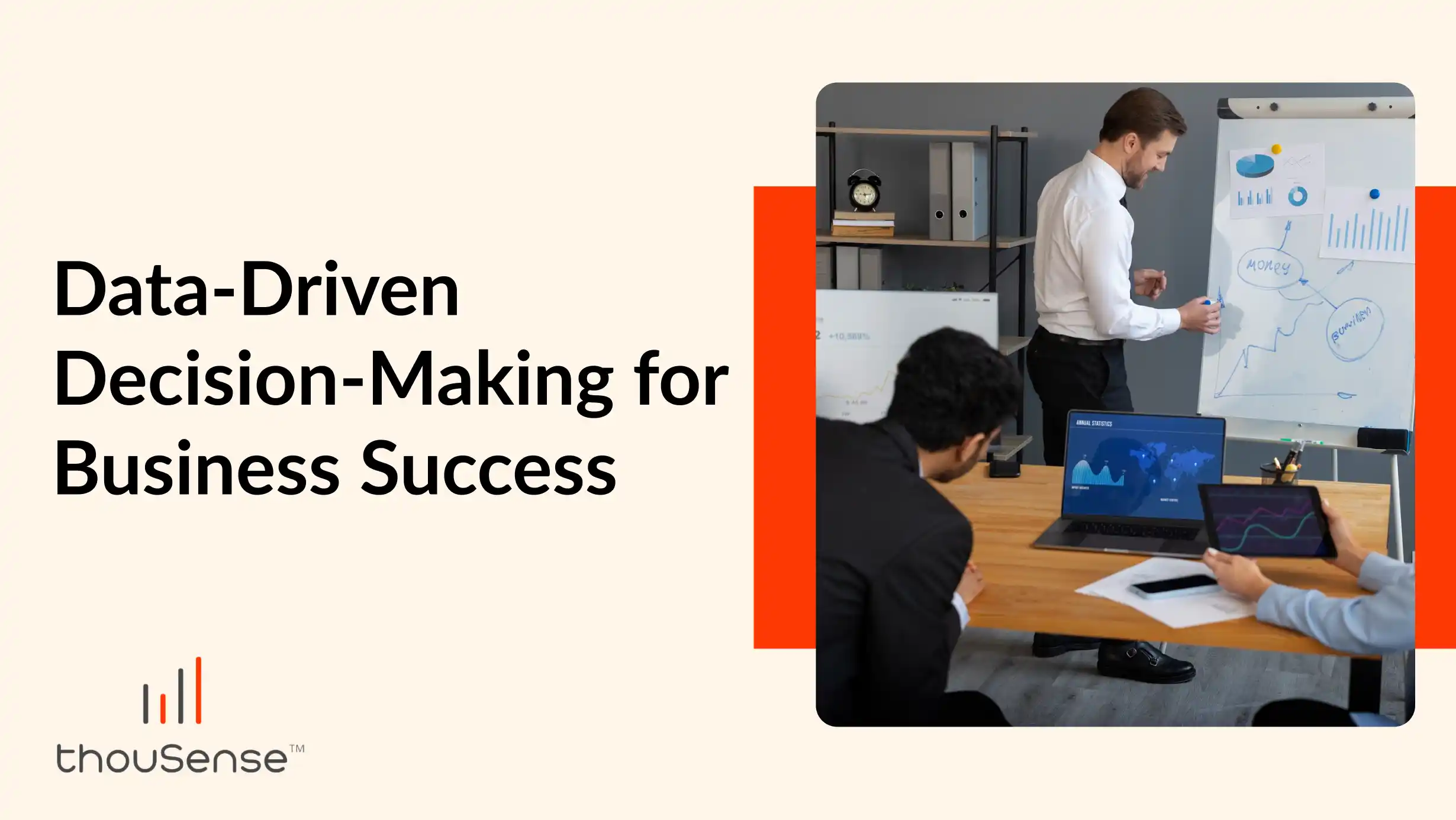
Making smart choices is key in today's tough, quick business world. Often, people decide based on emotions or gut feelings. But, in business, decisions need solid facts. Using data is crucial for business plans. In our forthcoming blog, we will discuss the fundamentals of demand-driven demand management, its advantages, and the role of artificial intelligence in enhancing business tools, strategic planning, and forecasting future consumer demands.
What is Data-Driven Decision Making (DDDM)?
Data-driven decision-making aligns company choices with goals. It uses measurements, data, and facts. This method is a smart way to guide business actions. It relies on consumer preferences and market research. By using gathered information, companies can make better decisions. This can lead to more revenue.
DDDM is about using data for major business decisions. It goes beyond just reviewing sales and customer data. It also includes website analytics for future planning. Analyzing data thoroughly is key for informed decision-making. This requires advanced technology and skilled team members.
Businesses use DDDM in various ways. They gather survey feedback and test products on users. They introduce new offerings in test markets. Also, they analyze demographic changes to identify trends and risks.
Role of Artificial Intelligence in Business
AI advances are enhancing business intelligence. This technology is now more crucial than ever. It's becoming a key part of modern business. AI significantly improves the process of making decisions based on data. Here's an explanation:
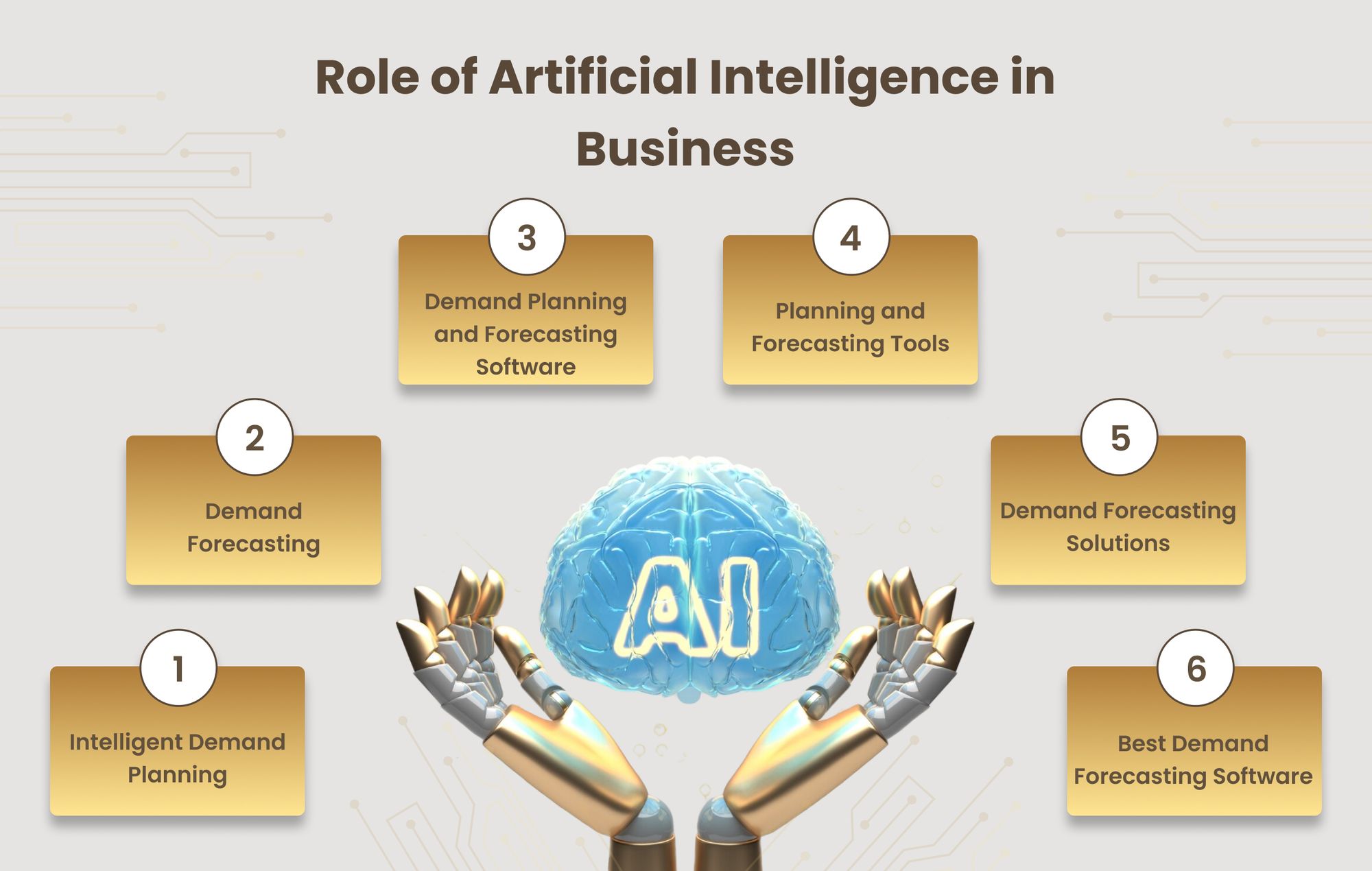
1. Intelligent Demand Planning
AI enables businesses to implement intelligent demand planning. By analyzing vast datasets, AI algorithms can predict future demand patterns more accurately than traditional methods. This leads to optimized inventory management, reduced costs, and improved customer satisfaction.
2. Demand Forecasting
AI-driven demand forecast tools use machine learning. They examine past data to find trends. This helps businesses make precise predictions. They can then match production and inventory with likely demand.
3. Demand Planning and Forecasting Software
AI-powered software elevates data analysis. It manages large data volumes in real-time. The software adapts to market shifts. It provides useful insights for decision-makers.
4. Planning and Forecasting Tools
AI boosts planning and forecasting tools. It automates analysis. This increases efficiency. Processes become more streamlined. It also ensures decisions rely on current, relevant data.
5. Demand Forecasting Solutions
AI-driven demand forecasting solutions offer advanced analytics and predictive modeling. These solutions enable businesses to forecast market trends. They recognize potential risks.
6. Best Demand Forecasting Software
The best demand forecasting software in today's business landscape often incorporates AI capabilities. These tools boost forecast accuracy in businesses. This leads to enhanced operational efficiency. It also helps in better strategic decision-making.
Benefits of Data-Driven Decision Making
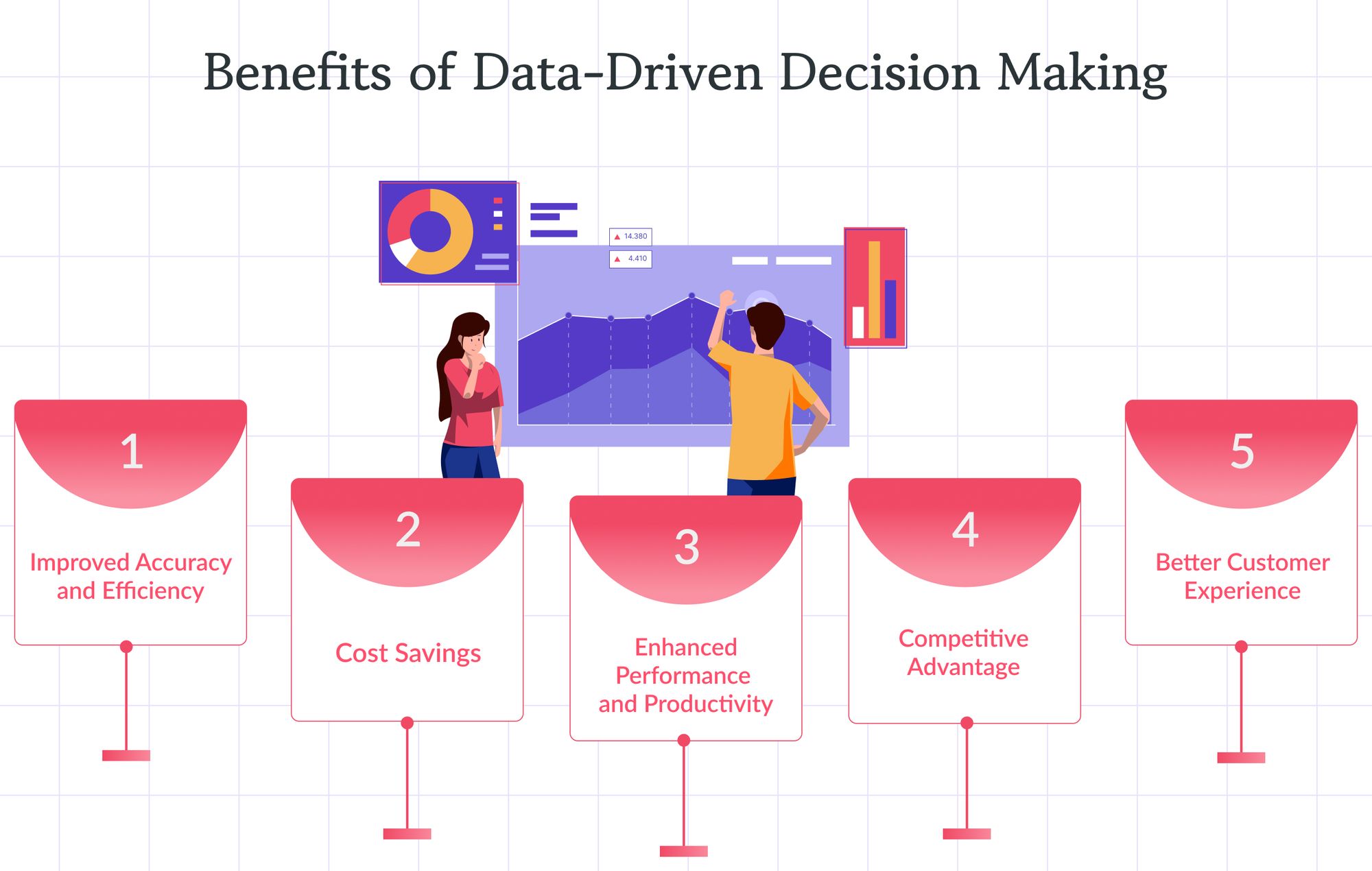
1. Improved Accuracy and Efficiency
Data-driven decisions, based on customer data, enhance understanding of customer needs, eliminating assumptive approaches and imparting accuracy and efficiency to business goals.
2. Cost Savings
Data-driven choices reduce costs. They lower failure risks for unsuitable products or services. Knowing the target audience helps. It guides businesses in tailoring their offerings. This increases sales directly.
3. Enhanced Performance and Productivity
Data-driven choices aid companies. They avoid potential risks. These choices offer clear insights. They also provide alternative paths. This makes decision-making effective.
4. Competitive Advantage
Data-driven decisions align team members with objectives and company goals, promoting efficiency and providing a competitive advantage.
5. Better Customer Experience
Data generated by companies represent their customers. Data-driven decision-making improves customer communication, enhances long-term user experience, and builds relationships.
How to Become More Data-Driven
To become data-driven, deliberate effort is essential. A strategic approach is key. Follow these steps for data-driven decision-making.
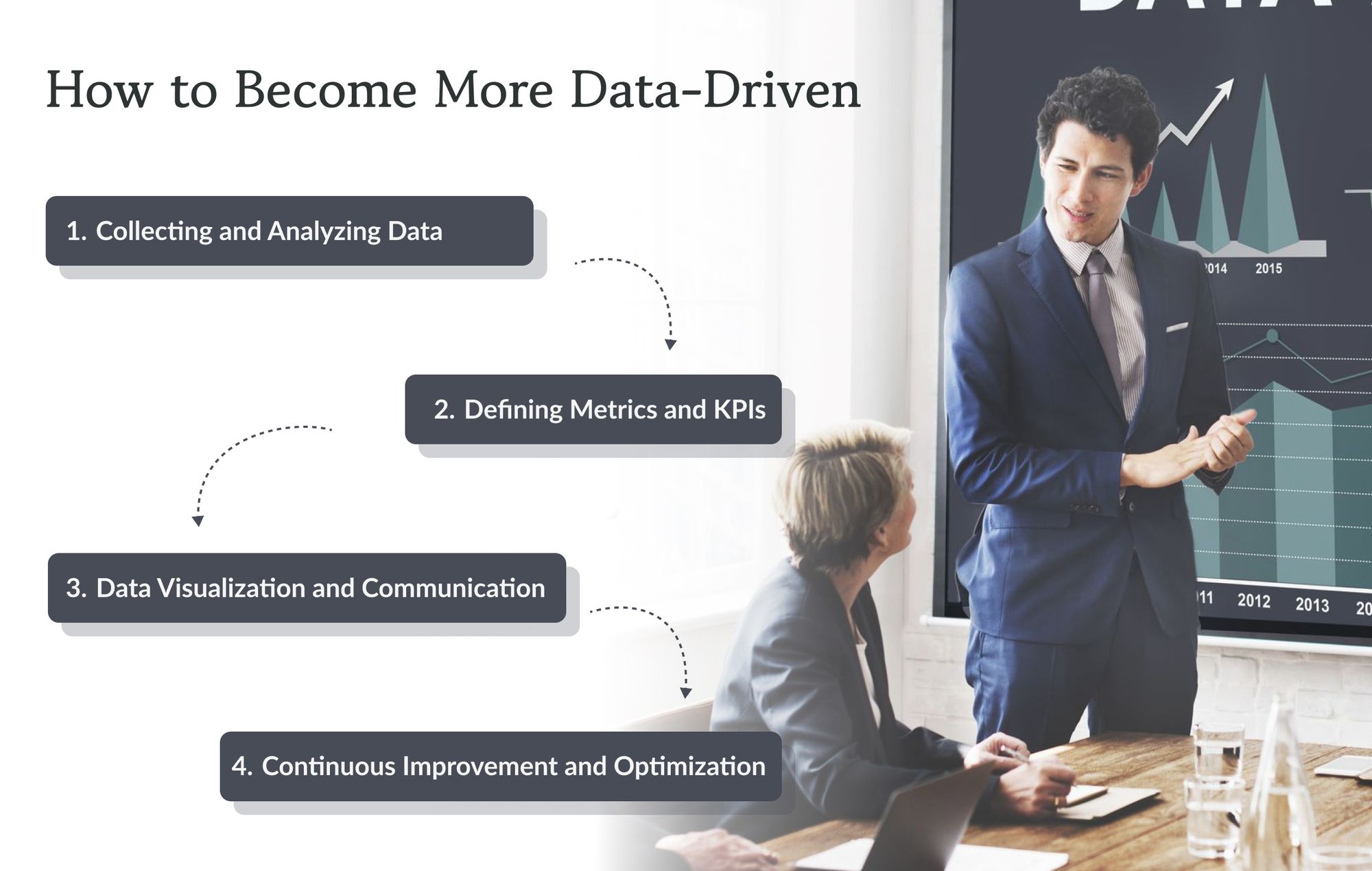
1. Collecting and Analyzing Data
Gather data using methods like surveys and databases. Examine it using techniques like statistical analysis. Identify trends and connections with machine learning.
2. Defining Metrics and KPIs
Gather data using methods like surveys and databases. Examine it using techniques like statistical analysis. Identify trends and connections with machine learning.
3. Data Visualization and Communication
Present results clearly and concisely using visualization techniques such as heat maps, graphs, charts, or animations. Effective communication ensures the accurate conveyance of interpretations.
4. Continuous Improvement and Optimization
Data-driven decision-making is an iterative process. Continuously look for more data and changes, update existing processes, and identify bottlenecks and shortcomings for improvement.
Benefits of Data-Driven Decision Making
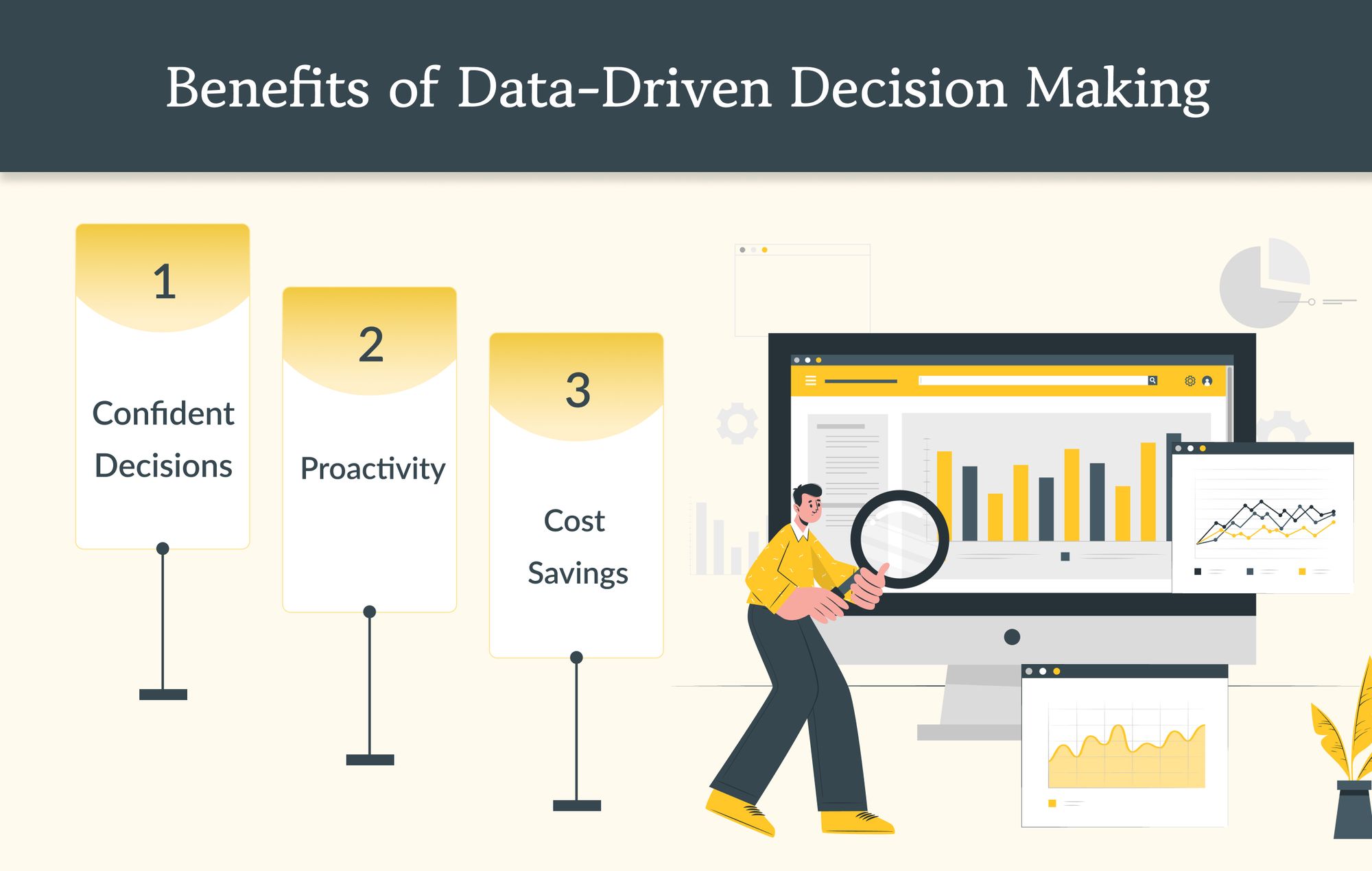
Data-driven choices bring many advantages. They enhance efficiency and accuracy. This approach boosts business success significantly.
1. Confident Decisions
Decisions based on data bring confidence. They depend on statistics and facts. This ensures choices rely on logic and reason.
2. Proactivity
Data-driven decision-making enables proactive identification of business opportunities and threats, leading to swift responses to market changes.
3. Cost Savings
Using data to decrease expenses is a significant benefit of data-driven decision-making, leading to improved operational efficiency.
Best Practices for Data-Driven Decision Making
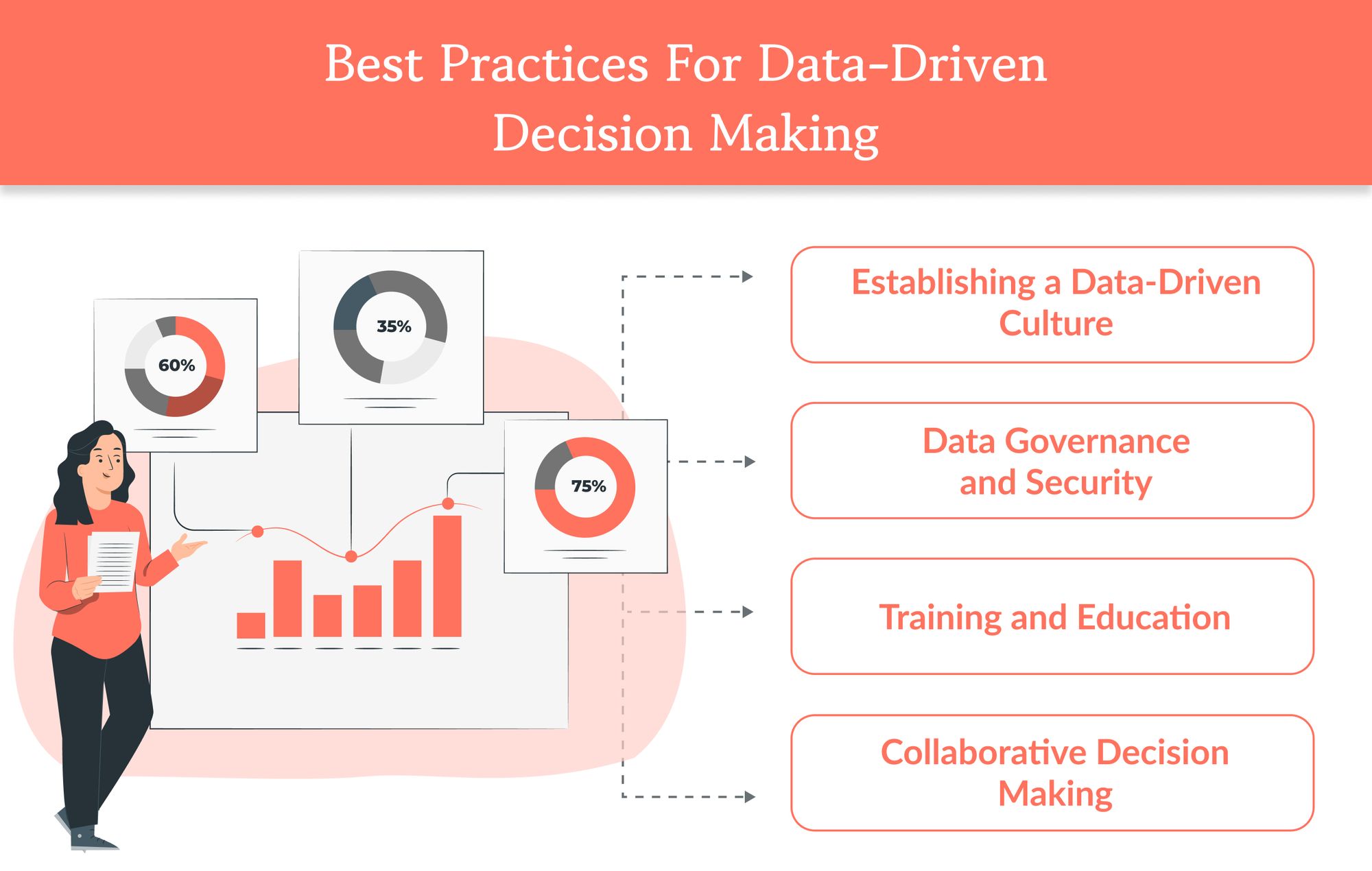
1. Establishing a Data-Driven Culture
Develop a culture based on data decisions. Leaders must stress data's value. They should shift their thinking and acknowledge employees' skills.
2. Data Governance and Security
Establish clear data policies. Define access, usage, and storage rules. Allocate distinct roles and responsibilities. Perform routine audits. Guarantee compliance and maintain quality.
3. Training and Education
Provide training and education in data concepts, visualization, communication, and analysis to new and existing employees.
4. Collaborative Decision Making
Involve cross-functional teams, stakeholders, and subject matter experts in decision-making to gain diverse perspectives and encourage teamwork.
Examples of Data-Driven Decision Making
1. Airline Industry
Lufthansa, the second-biggest carrier, grew its income by 30%. This was achieved by adopting a particular analytics system. Employee data-driven choices were key to this win.
2. Information Technology
Google boosted staff retention using data on top managers. This data-informed training for other employees. Consequently, employee favorability scores rose significantly.
3. E-commerce
Amazon utilizes data-driven decision-making in product recommendations based on previous purchases and search patterns, resulting in a significant profit increase.
Business Outcomes of Data-Driven Decision Making
Numerous big brands have incorporated data-driven decision-making, leading to:
● Strategic Planning: Enhances success odds, surpasses competition, lowers risks.
● Operational Output: Streamlines workflows, fixes process flaws.
● Cost Reduction: Cuts spending on guesses, pinpoints target market.
● Customer Satisfaction: Offers tailored advice, provides better, lasting experiences.
Conclusion
In conclusion, data-driven choices efficiently guide growth. Coupled with best practices, they enhance productivity. They also improve efficiency and provide valuable insights. This approach clarifies and aids in solving problems. It identifies opportunities and mitigates risks. Companies must address challenges to prevent losses. Integrating artificial intelligence boosts these tools' effectiveness. This ensures businesses lead in today's dynamic market.